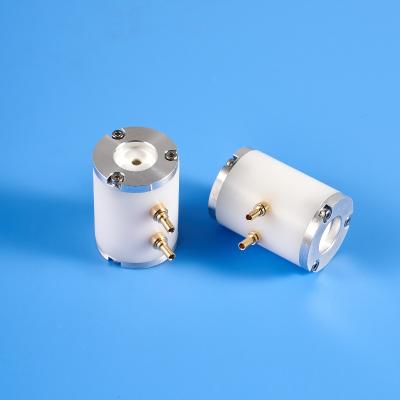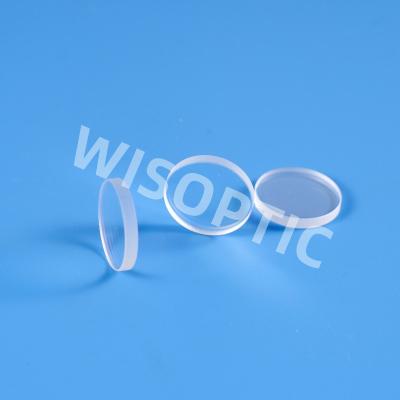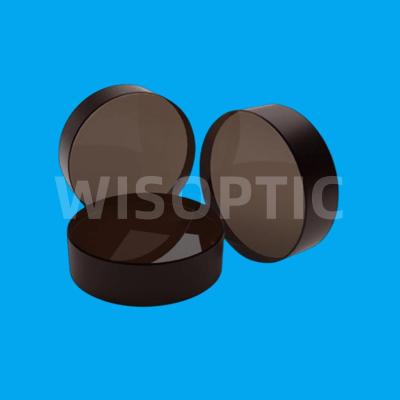Study on thermal characteristics of 266 nm deep ultraviolet laser generated by BBO crystal - 01
Introduction
High-power all-solid-state deep ultraviolet (DUV) lasers have many important applications in scientific research, medical diagnosis, and industrial manufacturing, such as Raman spectroscopy, photobioimaging, integrated circuit etching, and precision micromachining, due to their compact structure, high single-photon energy, and good long-term stability. At present, the all-solid-state 266 nm deep ultraviolet laser is relatively mature, because it can be directly generated by the frequency quadrupling process of the Nd-doped 1064 nm solid laser, that is, the Nd-doped 1064 nm solid laser is first converted into the second harmonic 532 nm green light using crystals such as lithium triborate (LBO, www.wisoptic.com) or potassium titanyl phosphate (KTP, www.wisoptic.com), and then the generated 532 nm laser is converted into the fourth harmonic 266 nm deep ultraviolet laser through crystals such as cesium lithium borate (CLBO, www.wisoptic.com), barium metaborate (BBO, www.wisoptic.com), potassium fluoroborate beryllium (KBBF), and rubidium fluoroborate beryllium (RBBF). Among these nonlinear crystals that can generate deep ultraviolet laser output, although KBBF and RBBF crystals can generate deep ultraviolet lasers as short as 150 nm, they have not yet been truly commercially applied due to their difficulty in growth and high cost. The most widely used crystals are CLBO and BBO.
In 2000, Kojima et al. from Osaka University in Japan used a Nd:YAG green laser with a repetition frequency of 10 kHz, a pulse width of 80 ns, and an average power of 106 W to obtain a 20 W 266 nm laser output through the CLBO crystal quadrupling; and in 2003, the deep ultraviolet laser output power was increased to 40 W by improving the crystallinity of the CLBO crystal and increasing the green light power; in 2024, Yu Hanghang et al. used a 532 nm nanosecond laser with a repetition frequency of 100 kHz and an average power of 35 W as the fundamental frequency light, achieving the highest power of 200 W. The output of 266 nm laser is 14 W, and the conversion efficiency of 532 nm to 266 nm laser can reach 41%, which is the highest conversion efficiency of 266 nm deep ultraviolet laser produced in China using CLBO crystal so far. However, CLBO crystal is prone to deliquesce in the air. To solve this problem, in 2022, Orii et al. of Spectronix Company of Japan placed CLBO crystal in a high-temperature sealed and dry air chamber for quadrupling, producing a 266 nm deep ultraviolet laser with an average power of 35.5 W, a repetition frequency of 600 kHz, and a pulse width of 8 ps, and it worked stably for 10,000 h at a power of 20 W. Compared with CLBO crystals, BBO crystals have the advantages of high nonlinear coefficient, less deliquesce, and stable chemical properties. They are also suitable for the research and development of practical all-solid-state deep ultraviolet lasers.
In recent years, high peak power all-solid-state 266 nm lasers with pulse widths ranging from nanoseconds to femtoseconds have been obtained using BBO crystals. In 2008, Liu et al. from Tsinghua University used a master oscillator power amplifier Nd:YVO4 laser as the infrared fundamental frequency light source, and used BBO crystals to obtain a 14.8 W high-power 266 nm deep ultraviolet laser output with a repetition frequency of 100 kHz and a pulse width of 10 ns through a quadruple frequency process. The conversion efficiency of green light to ultraviolet was 18.3%; in 2019, Rao et al. also used BBO crystals to double the green light with a repetition frequency of 78 MHz, a pulse width of 190 fs, and an average power of 2.4 W, and successfully obtained 0.6 W of 266 nm deep ultraviolet laser. However, the schemes using BBO as the quadruple frequency crystals could only generally obtain low conversion efficiency of deep ultraviolet laser, especially in the process of high-power 266 nm deep ultraviolet laser generation, the power saturation phenomenon is particularly serious. This is because the BBO crystal has serious two-photon absorption when irradiated with strong ultraviolet light of high peak power, and a large number of color center defects will be formed in the crystal, further aggravating the nonlinear absorption of ultraviolet light by the BBO crystal. Therefore, the light-transmitting area of the crystal is locally heated, and then a large temperature gradient is formed inside the crystal, resulting in that each part of the crystal no longer satisfies the phase matching condition at the same time, which ultimately limits the increase of the 266 nm deep ultraviolet laser power, and also has a great impact on the long-term stability and beam quality of the generated deep ultraviolet laser. To this end, Yap et al. from Osaka University in Japan developed a technology and method to compensate for the uneven distribution of temperature on the output end face of the crystal in 1998. By spraying nitrogen on the output end face of the crystal for cooling, the green-to-ultraviolet laser conversion efficiency was increased by 2.3 times. In 2011, Takahashi et al. from Mitsubishi Materials Corporation in Japan used elliptical beams for frequency doubling. By adjusting the overlap between green light and the generated deep ultraviolet light, the nonlinear absorption in the BBO crystal was reduced, thereby directly limiting the heat generation inside the crystal, achieving a maximum power of 5 W deep ultraviolet laser output, and a green-to-ultraviolet conversion efficiency of 23.8%. Compared with circular beams, the maximum output power of elliptical beam frequency doubling is increased by 1.7 times, but the frequency doubling conversion efficiency is low when the green light input power is low, and the deep ultraviolet laser beam quality is poor when operating at high power.
Based on this, this paper builds an all-solid-state 1064 nm near-infrared light quadrupled frequency to generate 266 nm deep ultraviolet laser experimental device, and deeply studies the internal temperature rise of BBO crystal at different matching temperatures during the quadrupled frequency process and its influence on the output power of 266 nm deep ultraviolet laser. Experimental data show that increasing the crystal matching temperature can effectively slow down the thermal effect caused by nonlinear absorption inside the crystal, thereby improving the deep ultraviolet laser power output. When the crystal matching temperature is increased from 60 ℃ to 180 ℃, the maximum output power of 266 nm deep ultraviolet laser also increases from 2.25 W to 2.56 W. At the same time, by analyzing the heat generation mechanism of BBO crystal during the quadrupled frequency process, on the basis of constructing a nonlinear absorption theoretical model to obtain the crystal temperature field distribution, the nonlinear absorption coefficient and normalized color center density under different matching temperatures and different ultraviolet laser powers are further calculated using experimental data. The research content of this paper provides a good reference for achieving high-power 266 nm deep ultraviolet laser output.



